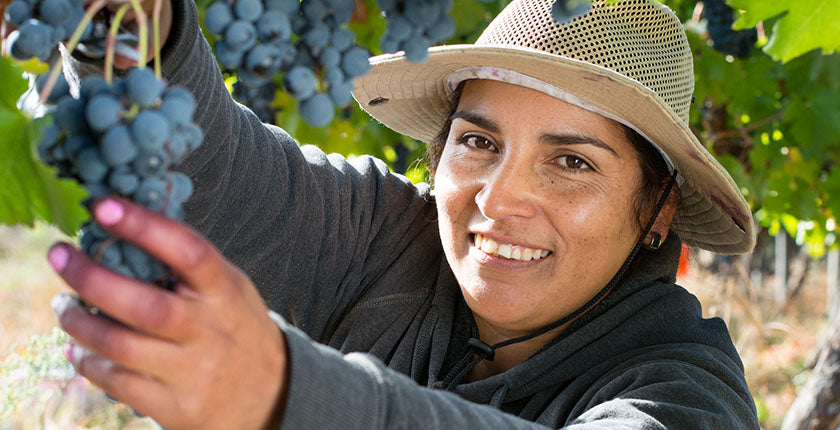
Everything You Need to Know About Chilean Wine
Isolated from the rest of the world, surrounded by the Pacific Ocean and Andes Mountains, is a thriving wine region you might not have heard of.
Chile has been planting and producing wine grapes since the 16th century and is home to every varietal from white to red.
While it may have gotten a bad rap for some of its cheaper wines in later years, the truth is there is so much more to the country’s wine industry.
Here’s everything you need to know about Chilean wine.
Early Beginnings
Since France and Italy are some of the world’s biggest and most well-known producers of distinguished wines; it might be easy to overlook Chile as a contender.
However, in the 17th century, while under Spanish rule, many of Chile’s grapes were banned. The political tension was so fierce Spain eventually ordered Chile’s vineyards to be burned after the country attempted to export its wines to Peru, whose wine industry was quickly dying out.
Thankfully, the Chileans ignored these demands, and its wine industry thrived.
In the 18th century, Chile became known for its incredibly sweet blends, produced mainly by the Pais and Muscatel grapes.
By the 19th century, French vines were introduced to Chile, eventually leading to the discovery of Carménère, nicknamed “the lost sixth grape of Bordeaux.”
The Phylloxera Epidemic
Further into the 19th century, Europe faced a devastating blow when a pest began to wreak havoc on its wine industry. Because of this, many vineyards were destroyed entirely, and some had to be re-planted with more thickly rooted vines.
A fantastic perk of Chile’s geography is that because the vineyards are isolated by water, it avoided the Phylloxera Epidemic altogether.
Best Wines Produced in Chile
Despite having such a long history, Chile is still considered a new world wine region. As the world’s seventh-largest producer of wine, there are many top blends to choose from.
Separated into white and red wine categories, here are the wines that Chile is most known for.

Chilean Red Wine
Cabernet Sauvignon
The most widely planted red grape varietal first arrived from Bordeaux in the 19th century. Specifically in Chile’s Maipo Valley, the finest and most complex Cabernet Sauvignon is produced.
Along with Chile’s other notable red wines, this one becomes silkier with age.
Carménère
This grape is grown in several regions and is Chile’s preferred “niche” grape. It was first imported from Medoc, and before the 1990s, it was mistaken for Merlot. This spicy red varietal ripens late and thrives in the heat.
Carménère features hearty black fruit and meat notes, smooth tannins, and light acidity.
Pinot Noir
This grape thrives in cooler climates, so the fact that the Pacific Ocean surrounds Chile is fantastic. If you like Pinot Noir, try a Chilean Pinot bursting with red fruit and lush forest flavors.
País
This grape is the original varietal that the Spanish first introduced in the 16th century. With its long history, this light-skinned grape is a true survivor and thrives in the rugged, southern terroir of regions like Bio Bio. If you enjoy medium-bodied, lightly acidic wine with moderate fruit notes like Gamay, País might be your blend.
Chilean White Wine
Sauvignon Blanc
If a particular wine takes up 20% of a region’s wine exports, you know it’s good. This particular wine has all the great flavors of a traditional Sauvignon Blanc. Still, because of where it’s grown, in the northern regions like Patagonia, it takes on a variety of expressions.
Be sure to try this wine with Chilean seafood dishes, as it’s the pairing it’s built for.
Chardonnay
Fermented with a restrained oak barrel method, Chilean Chardonnay takes on a fresher taste than creamier versions. Grown in Chile’s Central Region, you don’t want to miss this country’s superb take on Chardonnay.

Chilean Wine Regions
Because Chile is long and narrow, with the west on the Pacific Ocean and the east towards the Andes Mountains, the country has warmer and cooler climates. This makes Chile ideal for vineyards because of the terroir and weather variations.
Just imagine the grape varietal potential the winemakers have here!
That said, Chile has several diverse regions. We’ll go through a few of these below!
The Colchagua Valley
The Colcagua valley is one of the most well-known wine regions and is home to a Mediterranean climate with rich clay soils and granite terroir. Most of its vineyards are located near the foothills of the Coastal Range. This region is most known for its fine, full-bodied Malbecs.
Maule Valley
This area is located just South of Chile’s capital, Santiago, and is known for its decadent Cabernet Sauvignon and spicy Carmenere. Volcanic soils are common for vineyards in this region, which lend to the richness of the viticulture.
Leyda Valley
Leyda Valley is a small part of the San Antonio Valley and is known for its refreshing Sauvignon Blanc and Pinot Noir. Located right on the Pacific Ocean, this area boasts a climate as brisk as its wines. The coastal breeze keeps the wines healthy and free of disease.
Santa Rita
Home to one of Chile’s biggest wineries, Viña Santa Rita, this area has been producing wine since the early 1800s. But it’s not just the top-notch Cabernet Sauvignon that keeps wine enthusiasts coming back. The winery boasts beautiful parks and gorgeous 19th-century architecture, including a neo-gothic chapel.
Santa Rita is a must for breathtaking sites and mouthwatering blends.

Central Valley Region
This region is the most internationally known because of its high productivity and location near the Andes mountains. Many areas in this region have high salinity in the soil because of irrigation from the Maipo River. Maipo Valley has three sub-regions: Alto Maipo, Central Maipo, and the Pacific Maipo.
This region is home to all of Chile’s notable wines: Sauvignon Blanc, Merlot, Cabernet Sauvignon, Syrah, Chardonnay, and Carmenere.
Coquimbo Region
The climate in the Coquimbo Region is sunny and desert-like with rocky terroir. It benefits from irrigation from the Pacific Ocean and a vacuum-like wind due to its location near the Andes Mountains. It contains the three sub-regions Elqui, Limari, and Choapa and produces excellent Syrah.
Atacama Region
The Atacama Region is divided into the Copiapo and Huasco Valleys. It is known for producing Pisco and Parajete wine. The climate here is extremely dry yet somewhat cool, with more humidity in the summer.
Aconcagua Region
In its valley of the same name, the snow melt from Aconcagua irrigates its vineyards. Aconcagua is one of the smaller regions, and Aconcagua Valley is well known for its red wines. Its other sub-regions include the Casablanca Valley and San Antonio Valley.
Casablanca is known for its sandy soils and lighter wines such as Sauvignon Blanc, Pinot Noir, and Chardonnay. The San Antonio Valley benefits from water from the Maipo River and is known for its granite-like clay soils.

Don’t Overlook Chilean Wine
Seemingly an island of its own, it can be easy to overlook Chile as a wine industry contender, especially because of some of its bad rap for cheaper wine.
However, Chile is a thriving wine country with several distinct regions and sub-regions that vary in climate and terroir, which help create delicious blends like Syrah, Cabernet Sauvignon, and the flagship grape Carmenere.
Its vacuum-like coast creates a bubble between the Pacific Ocean and Andes Mountains, giving life to the vines with fresh water from the Maipo River and Aconcagua snowfall.
Don’t overlook Chilean wine as a luxury, high-end choice for decadent meals and celebrations. Visit The Wine Blog for more detailed wine industry content and don’t miss our wonderful selection of Chilean wine!









